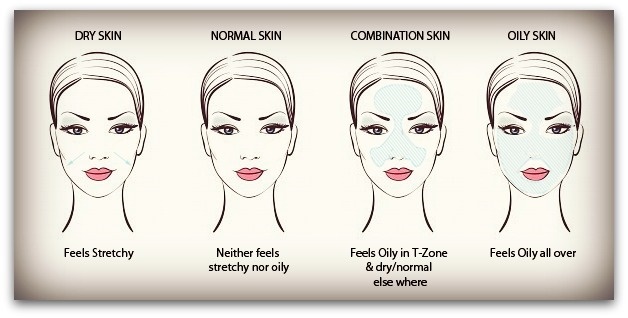Skin
THE 7 SKIN TYPES AND HOW TO IDENTIFY YOURS
I’m sure you are wondering why the products you are using isn’t working for you or you are not seeing any visible results and that’s probably because you are using the wrong product for your skin type. Yep! So that tells you the importance of knowing your skin type. This blog post is a bit lengthy and that’s because I have outlined and explained major skin types and how to quickly identify yours.
So the question is What’s your skin type?
Dry Skin
When your skin feels a bit flaky and rough Then you have a dry skin. Dry skin lacks moisture and lipids – i.e. fats. It is therefore less elastic. it is tight and, in many cases, tends to itch. Dry skin is as a result of lack of oil production. It reacts to environmental influences in particular by becoming irritated. With special care creams, you can restore its moisture stores and strengthen your skin’s protective barriers. Its best you get products that are extra moisturizing.
How to identify dry skin;
- It’s quite pale in colour
- Can look Flaky in places
- Feels uneven in texture
- Fine lines around eyes and mouth
Oily Skin
Oily skin is as a result of sebaceous glands overproducing oil (sebum) due to genetic makeup. Other causes can include hormones, humid climates, or over drying your skin which forces it to produce more oil. When your skin is shiny, or you notice a lot of excess oil on your face, neck, shoulders and back then you should know you have oily skin.
How to identify oily skin
- Appears shiny
- Large or open pores
- Prone to Acne
- Blackheads or whiteheads
Combination skin
As the name implies “combination” of both oily and dry skin. So what happens is that your T-ZONE (Forehead and Nose) is oily while your cheeks are dry. Combination skin can be a bit tricky because you have to deal with both skin types.
Normal Skin
Normal’ refers to a well-balanced skin. The scientific term for well-balanced skin is eudermic. The T-zone (forehead, chin and nose) may be a bit oily, but overall sebum and moisture is balanced and the skin is neither too oily nor too dry.
How to identify a Normal Skin:
- It is very clean and clear, no spots and not greasy
- It has fine pores
- Good blood circulation
- No discoloration
- No blemishes
- A velvety, soft and smooth texture
- Not prone to skin sensitivity
Sensitive skin
If you have sensitive skin, you’ll be all too aware of the wide variety of emotional and environmental factors that can affect it – from a change of weather, to household pets, stress and even dust. Sensitive skin is caused by nerve endings in the top layer of skin becoming irritated. This occurs because your skin’s natural barrier function is weakened and has broken down due to a trigger.
How to identify a sensitive skin
• Is sometimes sore or sensitive to touch
• Flushes easily after a spicy meal or drinking alcohol
• Has patches of redness that may or may not fade
• Has areas of uneven texture, with dryness and flakiness
• Reacts to skincare.
• Becomes itchy or develops a rash after contact with irritants
• Turns red and dries out after a hot shower or rigorous workout
• Becomes irritable after continued washing with hard water.
Mature skin
As ageing skin cannot store moisture as effectively any more, Sebaceous glands produce less oil as you age. Women gradually produce less oil beginning after menopause. This can make it harder to keep the skin moist, resulting in dryness and itchiness.
How to identify a mature skin
- Wrinkles
- Dull complexion
- Elasticity reduces
- Less collagen production
- Lines become deeper around the face
- Skin gets looser on the neck.
Dehydrated skin
Dehydrated skin, is a skin condition that is caused by external elements (weather and seasonal changes), unhealthy diet (lack of fresh produce) and lifestyle choices (alcohol or caffeine consumption). All of these factors deplete your skin’s water content, resulting in a less supple appearance. A key takeaway is that dehydration is characterized by a lack of water – not oil; even oily skin types can become dehydrated. Luckily, dehydrated skin is temporary and can be relieved with a combination of topical treatments and lifestyle changes. Drinking lots of water is essential in combating dehydrated skin.
How to identify a Dehydrated skin
- Dark under eye circle
- Itchy patches
- Sensitive skin areas.
Hopefully this can help you identify your skin type and help you pick the right products.

